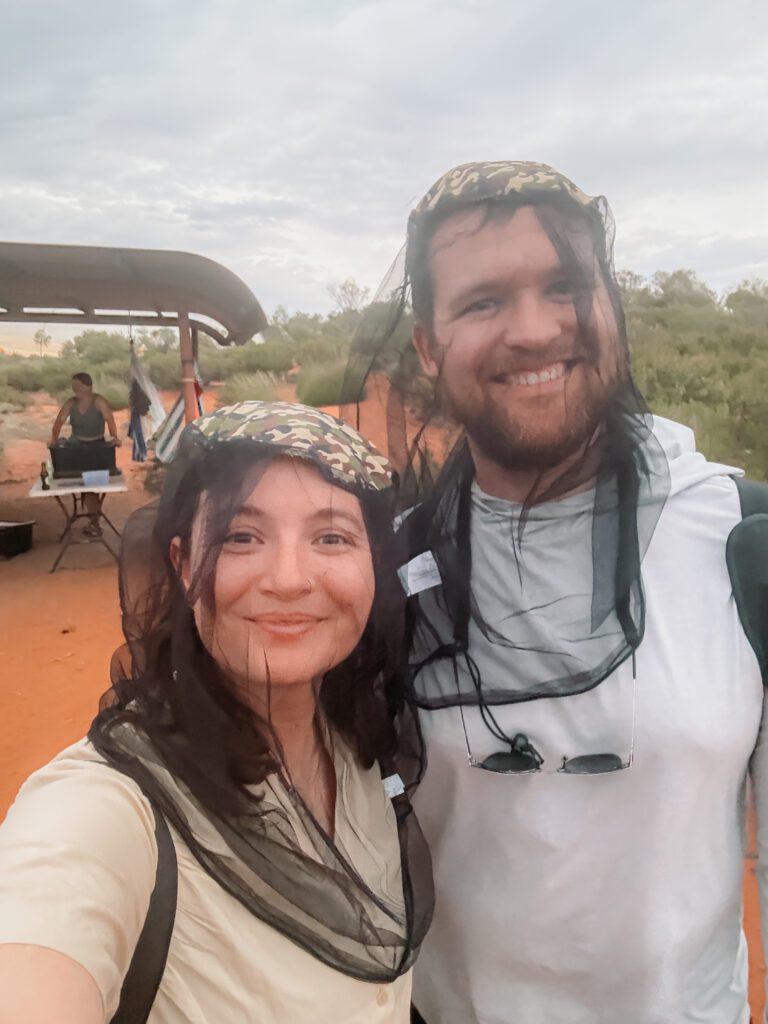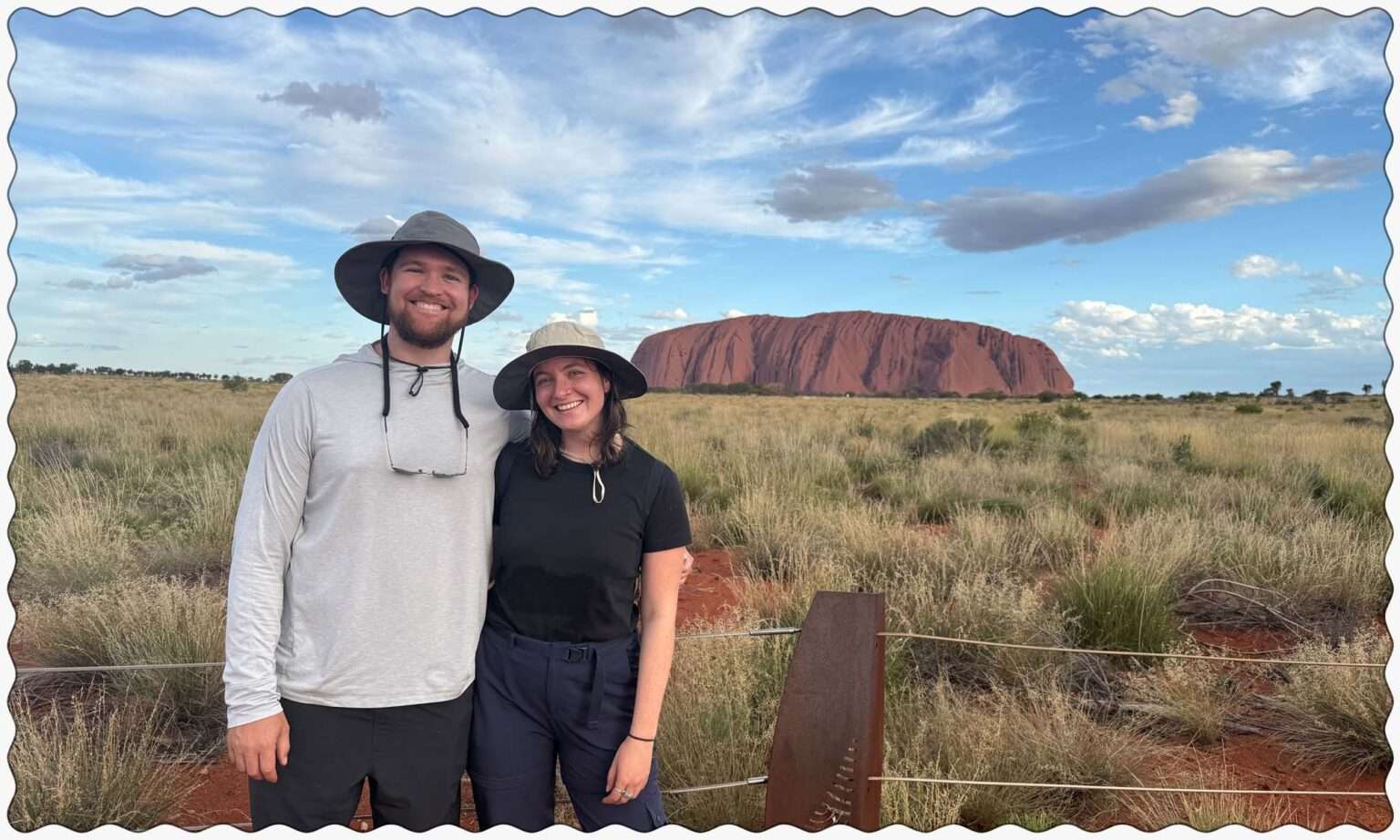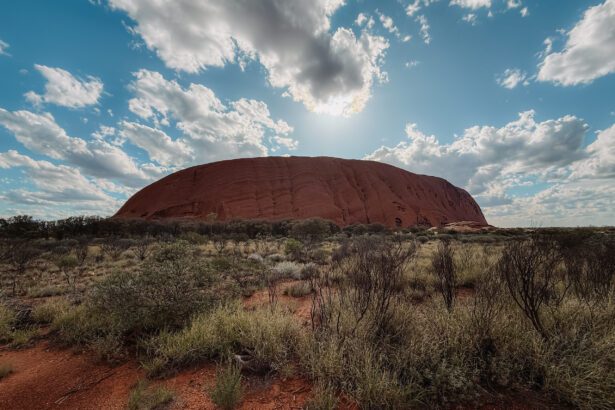This past week really pushed our comfort with an outback adventure and we succeeded! We decided to head to Central Australia, located in Australia’s immense outback. It contains sacred Aboriginal landmarks and we hiked in Uluru-Kata Tjuta and Watarrka National Parks to see these important sites and learn about the Aboriginal culture of the region.
Yes, we hike a lot but we rarely camp; however, this week we slept outside in swags, similar to a sleeping bag but with a canvas exterior and mattress on the inside (and we added sleeping bags inside the swag to add warmth.) The swags we used were not fully enclosed and our heads could be peaking out the top of the swag for some fresh air. We were able to watch the stars (until we took off our glasses to sleep). No bugs or snakes entered our accommodations since we kept everything zipped up and we were too tired to think about the creepy crawlies for very long. We were told that the most pesky creature in the area is the dingo, a wild dog-like animal that loves to steal stinky shoes and socks. Now we probably won’t camp in swags again anytime soon but it was fun to immerse ourselves in the outback lifestyle for a few nights.
We loved learning more about the Aboriginal culture of the region. It is hard to comprehend the tie that these people feel to the land since they have been living in harmony with this land for over 50,000 years. Walking through these vast, stark, beautiful, and serene landscapes is incredibly special. One moment you are walking through a red desert; the next moment you are standing beside an enormous rock; and after walking for 15 minutes in a barren landscape, you find a pool of fresh water. It’s striking and you can’t help but wonder how people have felt among such harsh beauty for tens of thousands of years.
During our visit, we also learned about how European settlers and explorers have taken advantage of the Aboriginal people and exploited their sacred land for tourism over the last few centuries. It is only over the last few decades that the Aboriginal people have been able to start to regain some control over the area and share in part of the tourism (although it is unclear exactly how much they benefit from it). The Aboriginal people have kept a lot of their culture private and guarded from tourists because it has historically been exploited and appropriated. It is the Anangu people, the local Aboriginals, who have determined the parts of their stories and culture that they choose to share with visitors. It was an honor to get to learn what we did in Uluru and it is through respecting the desires of the Original Owners of the land (the Anangu people) that tourists and visitors can continue to experience and visit these magnificent landscapes.
Destination Overview
Central Australia: Uluru to Alice Springs
The Outback refers to an area of Australia that is estimated to cover nearly 70% of the entire continent and approximately 10 states of California could fit inside it. This region encompasses the entire Northern Territory, most of Western Australia/South Australia, and a portion of Queensland/New South Wales – it really is most of the country. However, this vast stretch of land only contains 5% of the Australian population due to the harsh living conditions. In spite of the challenging environment, Aboriginal communities found a way to successfully live all throughout the Outback prior to the arrival of the Europeans. The most sacred Aboriginal sites can be found in this immense region and some of the communities have retained land rights to them. Today the Northern Territory is the most popular region for tourists that want to experience the outback for an unforgettable adventure through its rugged beauty.
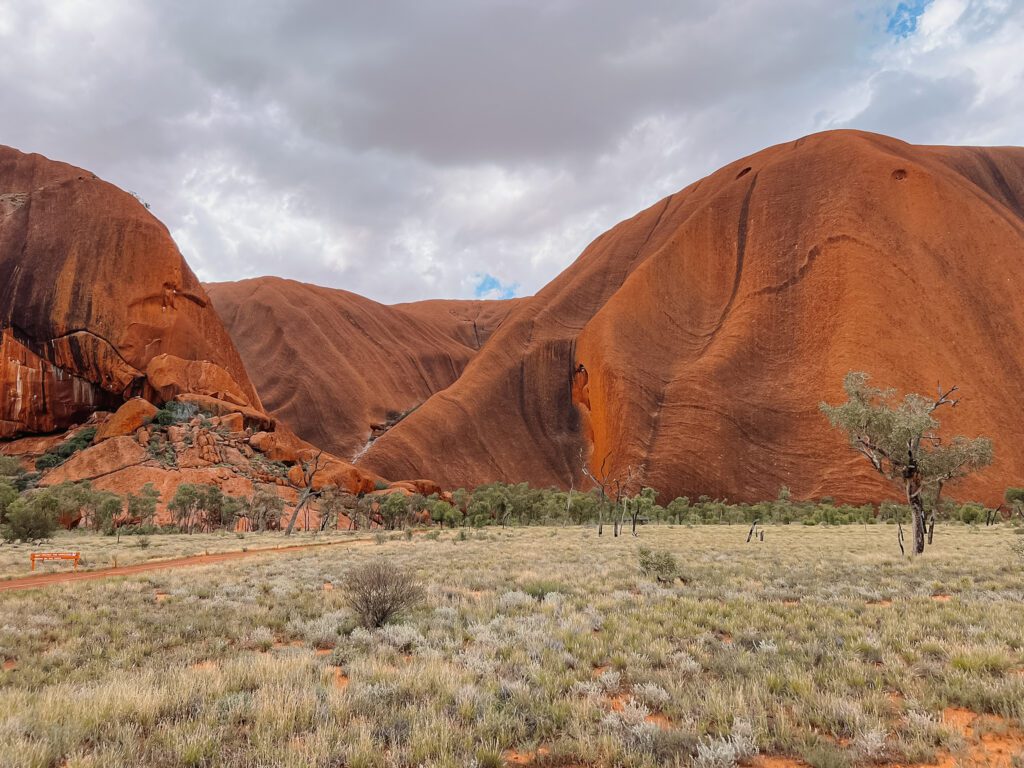
Given the vast size of the outback, it can be difficult to reach from the populated coastal regions. We wanted to prioritize a trip to Uluru, which is located in the Outback’s Red Center of Central Australia within the Northern Territory. Uluru (temporarily renamed Ayer’s Rock by settlers) is the world’s largest monolith (continuous rock) and a sacred site for the Anangu community. Uluru is taller than the Eiffel Tower and it is believed that only a third of the rock is actually visible above ground. It is one of the three sacred Aboriginal rocks in the area with the other two being Kata Tjuta and Atila (currently named Mount Conner). Today Atila is owned by a private landowner but both Uluru as well as Kata Tjuta have been returned to the Anangu and can be visited in the Uluru-Kata Tjuta National Park. (The Aboriginal people do not have the concept of “owning land” and believe that they are just keepers of the Earth to ensure that future generations can enjoy the land as well.) The closest airport to visit this National Park is Ayers Rock Airport which is in a small town operated almost entirely by Ayers Rock Resort.
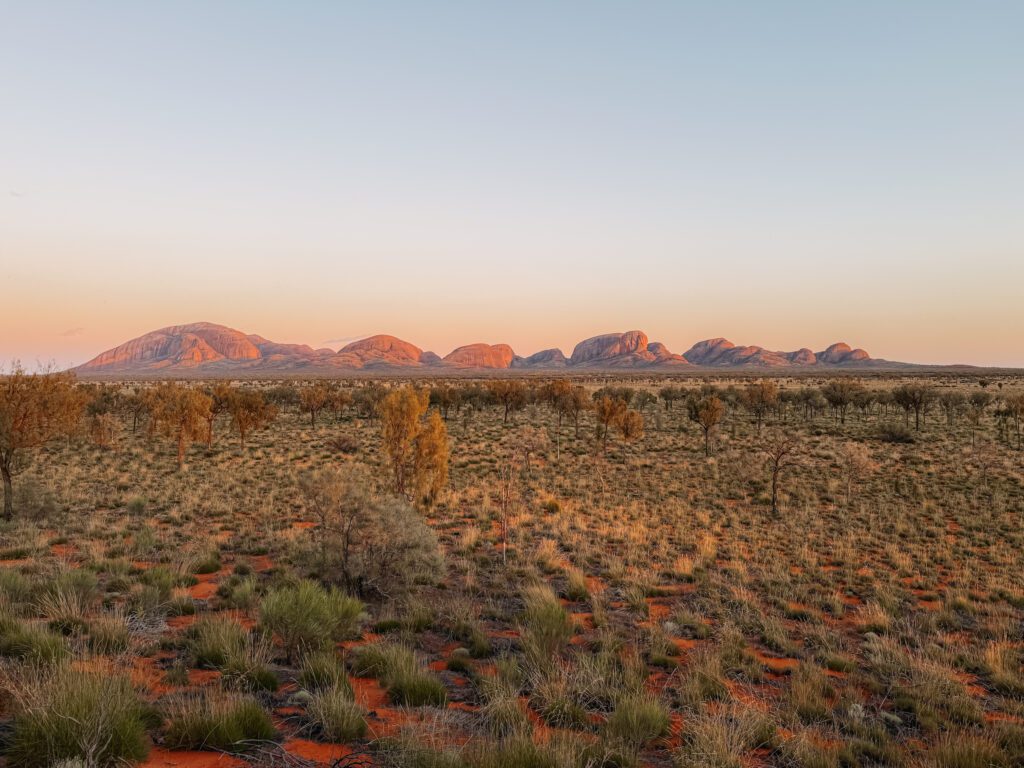
The second closest airport is Alice Springs which is about a 6 hour drive away. Given the harsh conditions and long distances to drive between areas that offer accommodations, one of the most efficient ways to see the region is camping. We decided to book with a local Alice Springs based operator called Mulgas Adventures so that we could navigate the area safely and learn more about the cultural importance of these sacred places. Their 3-night tour stopped at Uluru, Kata Tjuta, and Watarrka National Park between Ayers Rock Airport and Alice Springs, leading to an incredible experience in the Outback.
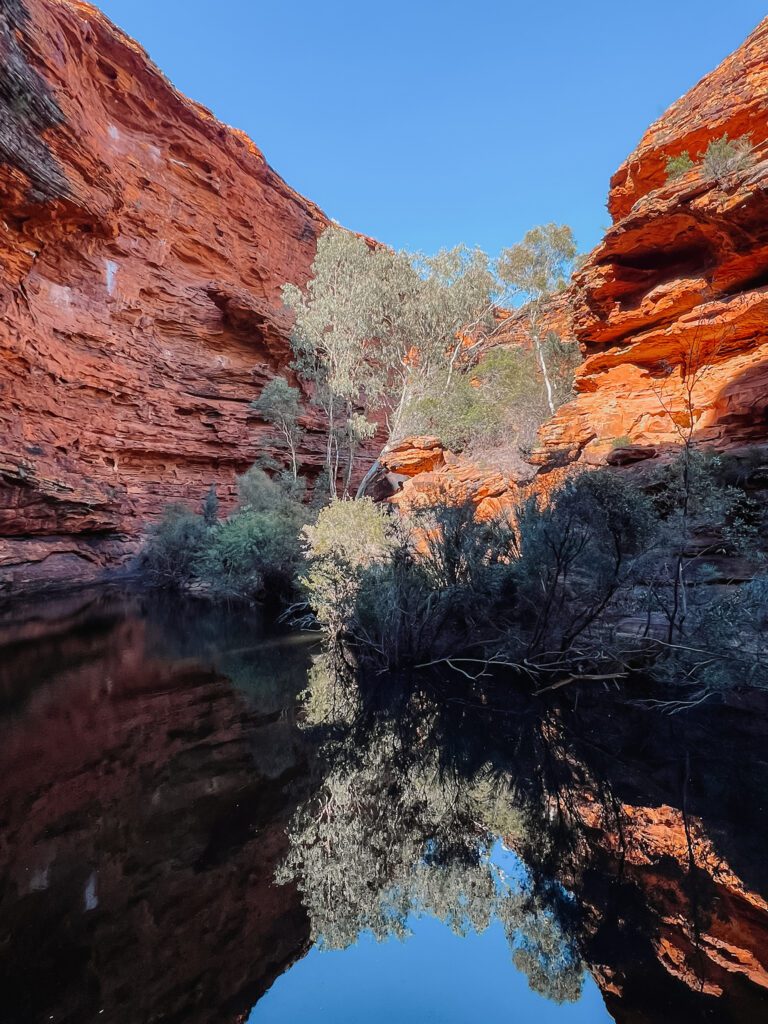
Where to Read More
A 3 Day Uluru Tour: What to Expect with Mulgas Adventures
Curious about the best 3 day Uluru tour? Read about the group tours with Mulgas Adventures and how touring with them could be the best option to visit the area.
Best Thing I Ate this Week
Enjoying the Australian Camping Cuisine
In 2024, I (Kevin) camped for the first time while doing the W-Trek and then proceeded to do so twice more while in Peru and Colombia. Camping turned out not to be my favorite activity, but for all three times, it was necessary in order to get the most out of the experience in those regions. A nice benefit to the camping excursions of Latin America was that experts set up the tents and provided the meals during the stays.
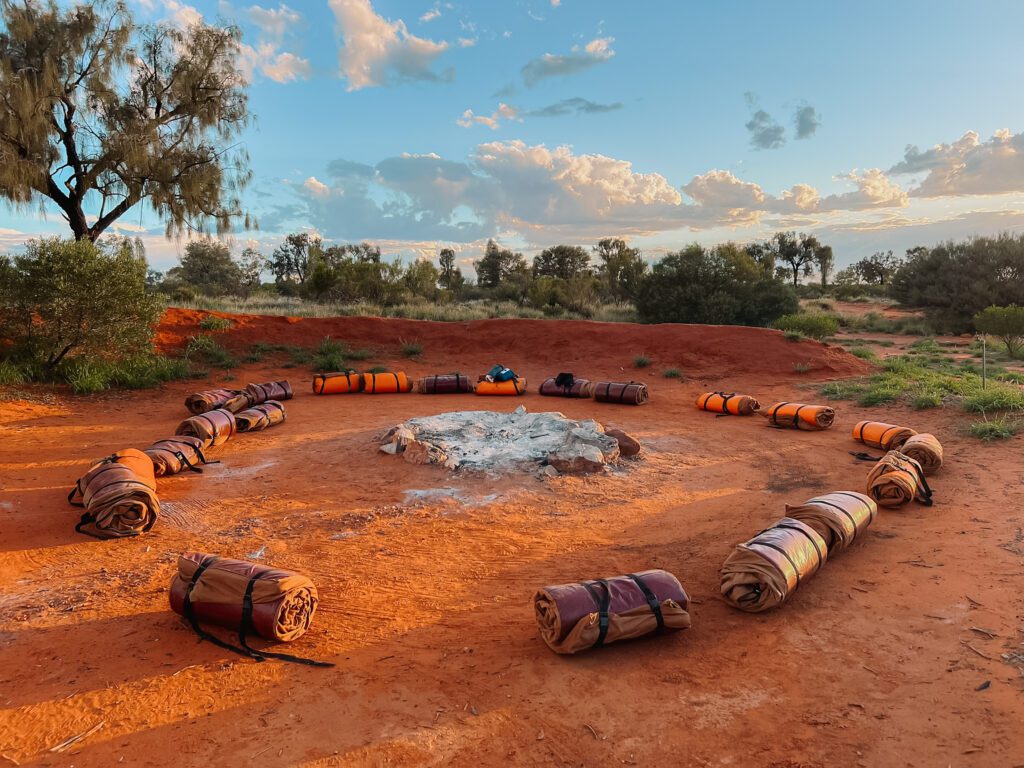
The camping experience with Mulgas Adventures was going to be slightly different because we would be preparing our own meals as a whole group, and instead of sleeping in tents, we would be in Australian swags. A swag is a traditional Australian camping item that resembles a large canvas blanket that can be zipped closed but with a mattress pad inside. (We added a sleeping bag in them to keep us warm because it can get quite cold in the evenings in the desert.) They are used in Central Australia because there are not as many concerns about venomous spiders or snakes that can be found in other wilderness areas throughout the country. The swags that we used did not have a sealed face net, which on the positive side allowed us to enjoy the breathtaking stars, but on the down side left us exposed to the various critters throughout the night.
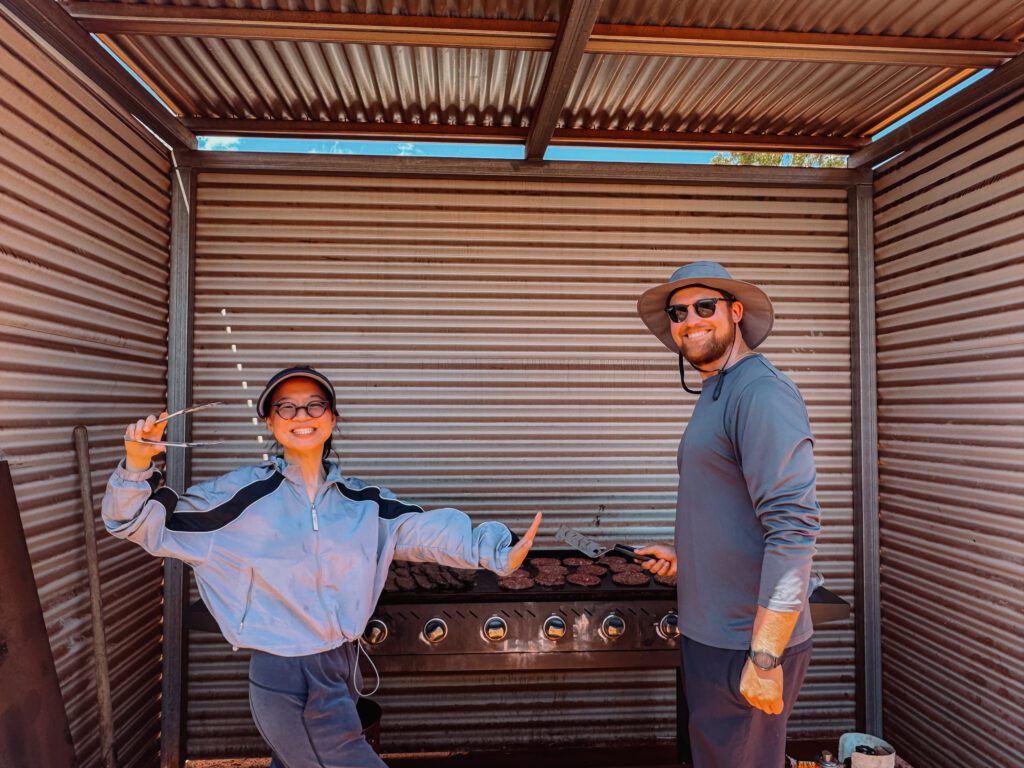
While I could never get used to sleeping in an exposed swag, preparing group meals alongside our wonderful tour leader, James, was an added bonus to the trip. On the first night, James took the primary lead on providing tacos and sparkling wine for sunset at Uluru. The weather ended up being perfect and watching the color of the rock change as the sun set was unforgettable. On the second day, we took the lead on preparing the meals. For lunch, the main dish was camel burgers, and it ended up being very similar to cooking beef burgers. We learned that camels were brought over from Afghanistan during exploration of the Northern Territory, given the similarly harsh desert climate, and today are considered a pest. For dinner we prepared kangaroo steaks, which are native to Australia but also are seen as pests due to an exploding population after settlers changed the land and ecosystem around the country. Both meats were gamey and the kangaroo was very lean so neither would be a regular item for me going forward. However, it was a fun experience cooking with new friends while having a more authentic camping experience and being able to try unique Australian camping cuisine. On the last night, James once again took the lead with a delicious pasta dinner. It was a fun way to conclude an adventure in the Outback that included many new memories over shared meals.
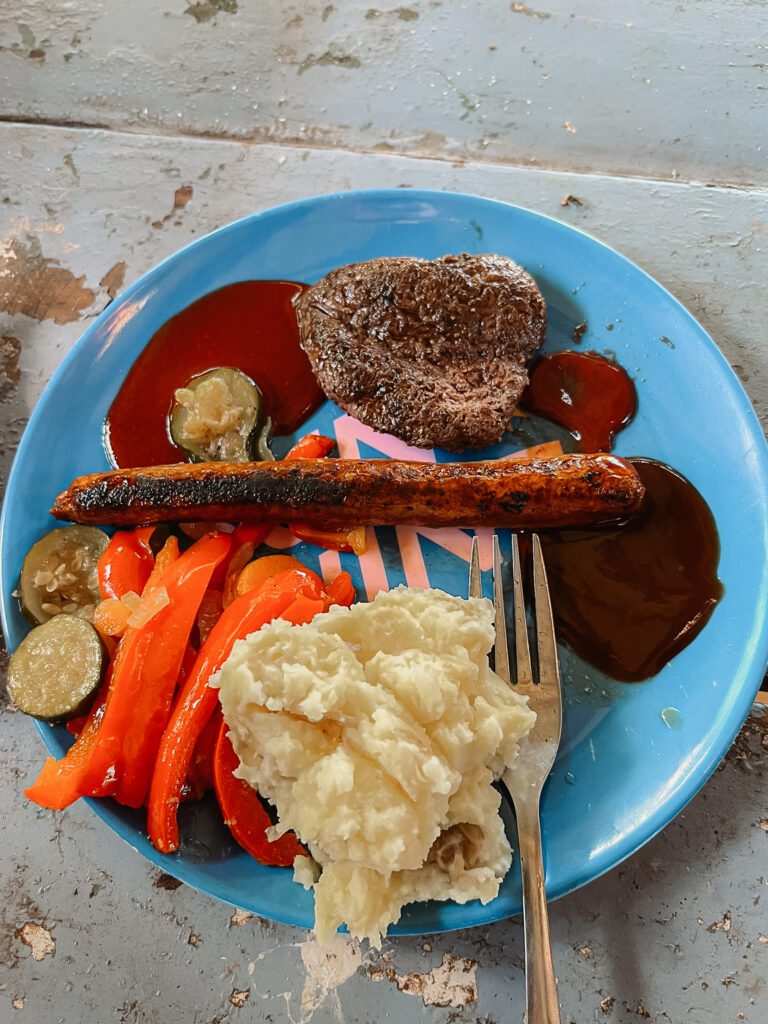
Travel Tip of the Week
Follow Local Guidance to Stay Safe in the Outback
In Uluru, the summer temperatures of December and January average approximately 95°F (35°C) and have days that can go up to 120°F (49°C). The ideal time to visit is in April/May or September/October for the best weather conditions. Regardless of when you visit, it is imperative to follow the direction of local experts as dehydration can be a life threatening problem. Since we were traveling with an expert guide (James) we had the luxury of direct knowledge of what we should be doing in order to stay safe during the entirety of our trip. If you are traveling without a guide, be sure to check in with the Uluru Visitor Center to plan your days according to the weather for your trip. There are also informational boards at the start of the main trails that provide safety reminders and water tanks throughout hikes to help you refill water bottles and stay hydrated.
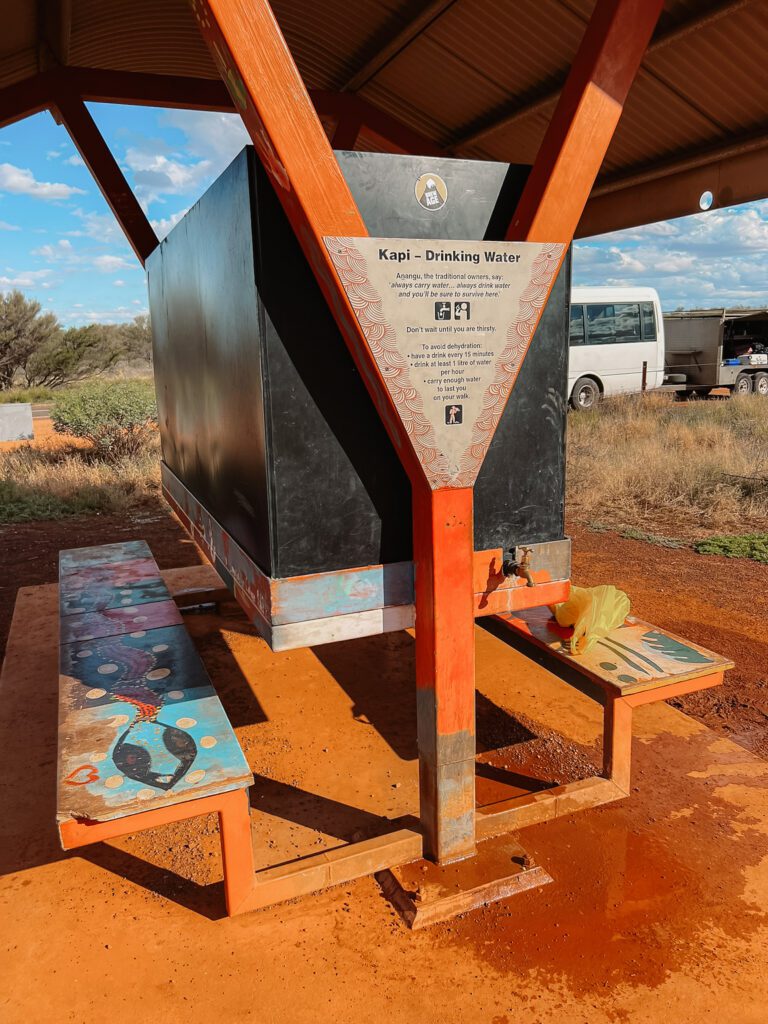
During our visit, we were fortunate to have nice weather of around 90°F (around 32°C). It also had recently rained so there were a lot of ponds and streams that were filled throughout the area, which meant very few pesky flies during our hikes. During the dry times these flies will swarm any moisture that they can find, meaning your eyes, nose, and mouth, so it is recommended to have an Australian fly mask if you want to avoid having flies constantly on you in dry weather. Besides having great weather, the information provided by James kept us safe during our hikes. We were informed that given the sunny and arid conditions we should be drinking about 1 liter per hour. Luckily we were provided with ample opportunities to fill up our water bottles at the campsites. bus, and at the water refill stations located along the trails.
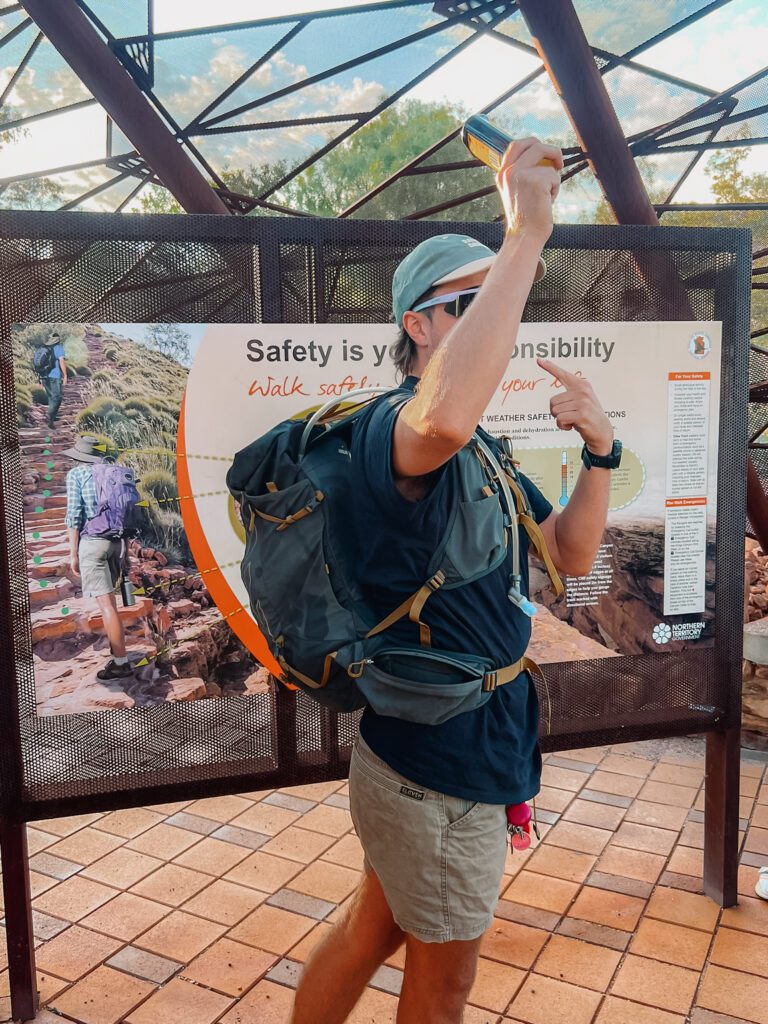
Additionally, James would monitor the weather the night before to tailor the start time and length of the hikes. Thankfully, because the weather wasn’t too hot, we had a long walk around the base of Uluru. We were also able to do the full Kata Tjuta and Kings Canyon hikes during our visit. Even with the nicer weather, we started both the Kata Tjuta Valley of the Winds Hike and Watarrka National Park Kings Canyon Hike around 6:30 AM to avoid the harshest conditions of the day. It was a good thing because there are certain times and temperatures that the trails close for safety reasons. A last piece of advice that we received is to avoid getting too close to the edge of cliffs, particularly on the Kings Canyon hike where tourists have unfortunately fallen to their deaths. (This is common in all hiking areas, but it was helpful for our group to receive friendly reminders.) There were indicators of where the trails were and following those will enable you to stay safe during your hikes in Central Australia.
